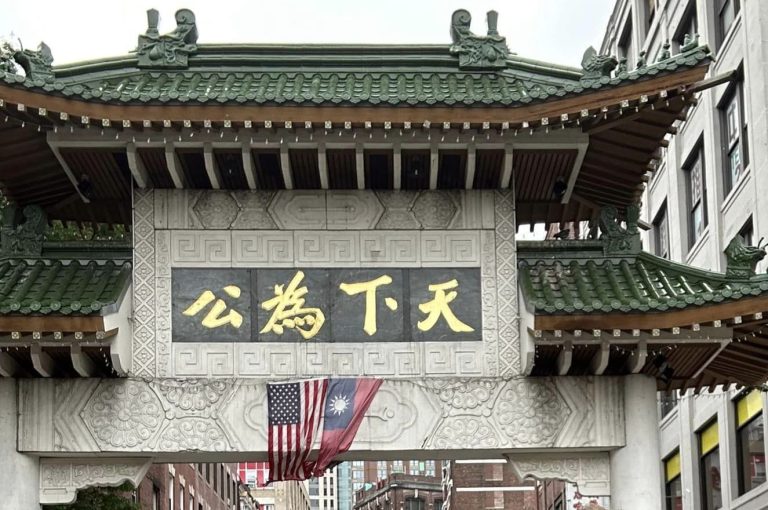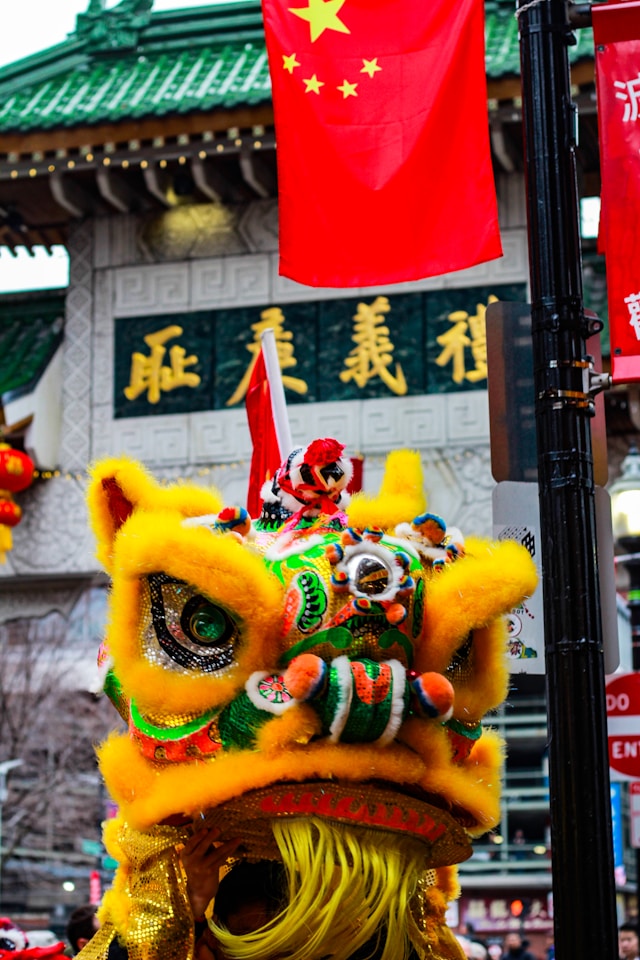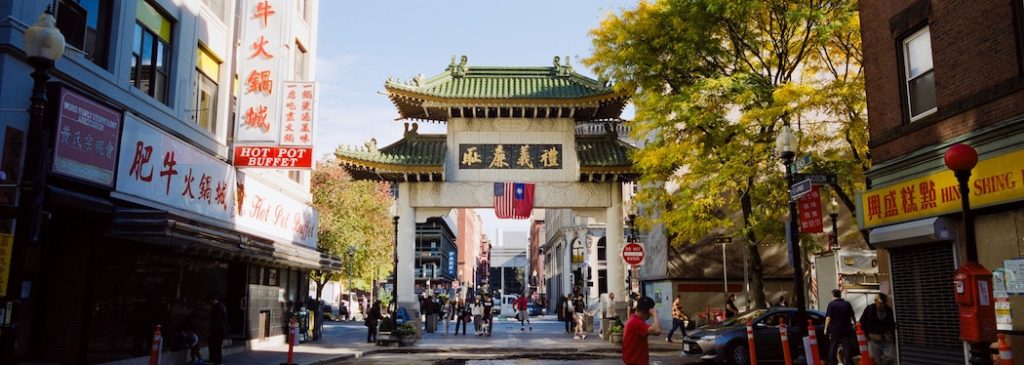
Photo: Chinatown Gate in Boston, Massachusetts with American and Taiwanese flags. Credit: Bix Luce.
In the 1950s and 1960s, large parts of the neighborhood were demolished to make way for the construction of highways and public housing.
Boston, Mass. Boston’s Chinatown, a vibrant and culturally rich neighborhood, stands as a testament to the enduring spirit and resilience of its community. Its history is a tapestry of immigration, adaptation, and cultural preservation, reflecting broader trends in American history and the specific experiences of Chinese immigrants in Boston.
Early Beginnings
The roots of Boston’s Chinatown can be traced back to the late 19th century. The first Chinese immigrants arrived in the United States during the California Gold Rush of the 1840s and 1850s, later moving eastward to escape the intense anti-Chinese sentiment and economic competition on the West Coast. By the 1870s, a small but growing Chinese community began to take shape in Boston, primarily in the South Cove area, which offered affordable housing and business opportunities.

Growth and Development
Chinatown’s development was significantly influenced by the construction of the transcontinental railroad, which brought many Chinese laborers to the United States. After the completion of the railroad, many of these laborers sought new opportunities in urban centers across the country, including Boston. The community began to flourish with the establishment of family associations, businesses, and cultural institutions. Chinese laundries, grocery stores, and restaurants became the backbone of the neighborhood’s economy.
Challenges and Resilience
The Chinese Exclusion Act of 1882 posed a severe challenge to the community, severely restricting immigration and making it difficult for families to reunite. Despite this, Chinatown managed to survive and even thrive, largely due to the strong networks of family associations and mutual aid societies that provided support and advocacy for residents.
The mid-20th century brought additional challenges, including urban renewal projects that threatened to displace the community. In the 1950s and 1960s, large parts of the neighborhood were demolished to make way for the construction of highways and public housing. The community mobilized to resist these changes, and their efforts were partially successful in preserving significant portions of Chinatown.
Cultural and Economic Renaissance
In recent decades, Boston’s Chinatown has experienced a cultural and economic renaissance. The lifting of immigration restrictions in 1965 brought a new wave of immigrants, revitalizing the community and contributing to its growth and diversity. Today, Chinatown is a bustling neighborhood that continues to celebrate its heritage while adapting to the modern urban landscape.

Chinatown’s streets are lined with restaurants offering diverse Chinese cuisines, shops selling traditional goods, and cultural institutions that promote Chinese arts and traditions. The neighborhood also hosts annual events such as the Chinese New Year Parade, which draws visitors from across the city and beyond.
Boston’s Chinatown is more than just a neighborhood; it is a living, breathing community that embodies the history, struggles, and triumphs of Chinese Americans in Boston. Its rich cultural heritage and dynamic evolution reflect the broader story of immigration and adaptation in America. As it continues to grow and change, Chinatown remains a vital part of Boston’s multicultural fabric.
#BostonChinatown, #ChineseAmericanHistory, #UrbanRenewal, #CulturalHeritage, #BostonHistory, #ImmigrantCommunities
Tags: Boston Chinatown, Chinese immigrants, urban development, cultural preservation, immigration history, community resilience
From Gold Rush to Urban Renewal: Legacy of Boston’s Chinatown (June 24, 2023)